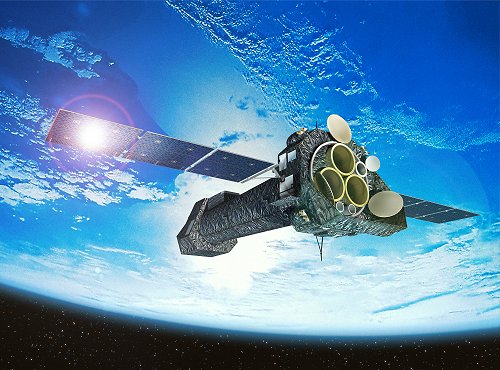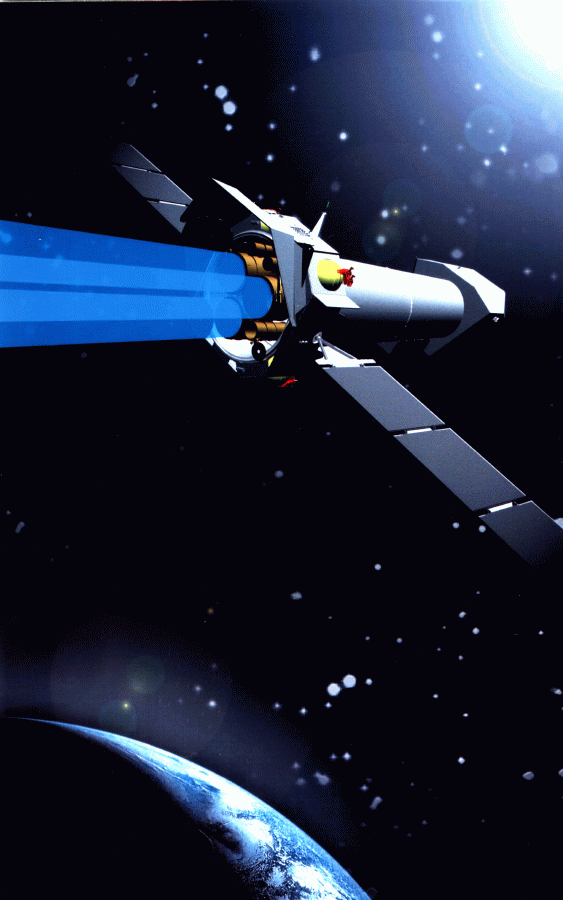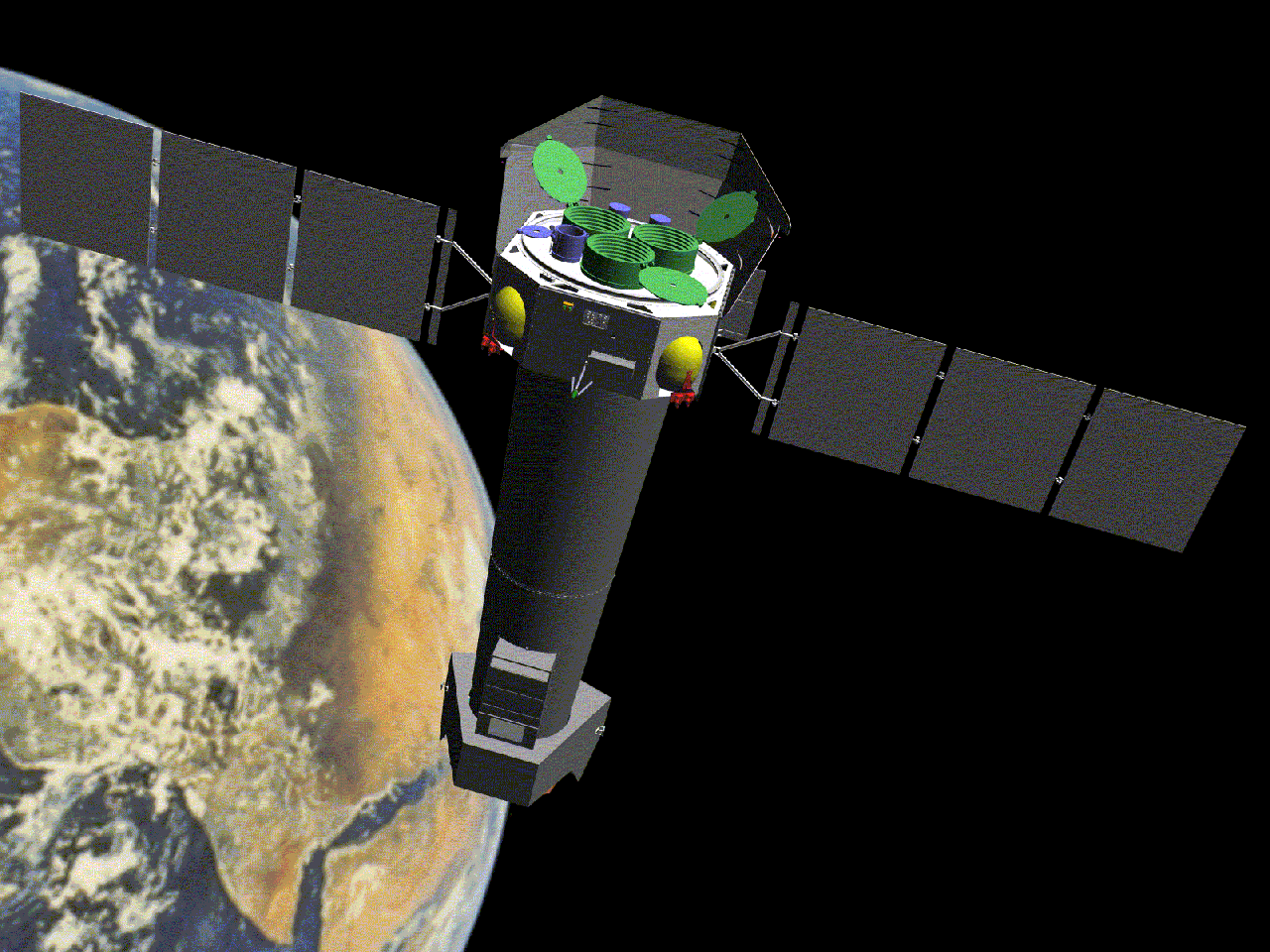XMM-NEWTON SATELLITE IMAGES
Artist's conception of the XMM-Newton satellite

This image is representative of what XMM-Newton looks like in orbit.
XMM-Newton gathering X-ray radiation

XMM-Newton's three parallel X-ray telescopes simultaneously scan the same area of the sky for cosmic sources. The mirrors only receive X-rays and do not act like giant flashlights illuminating the sky.
Besides the X-ray telescopes, one can see three more, smaller entrance windows. The one at the bottom right is the Optical Montior, a 30 cm optical/UV telescope observing the same part of the sky as the X-ray telescopes, and at the top two redundant star trackers are mounted.
XMM-Newton "over Africa"

Artist's impression of XMM-Newton over Africa, with a clear representation of several spacecraft components. This sketch provides a good outline of the different satellite components shown in photos of the real hardware.
The entrance windows of the three X-ray telescopes, with the aperture doors, are shown in green. Mounted parallel to these, in blue colour, are the Optical Monitor 30-cm telescope (front left) and the two star trackers (back). Behind these, one can see the X-ray baffle, which prevents radiation from the Earth and the Sun from entering the entrance apertures as stray light. Also on the top part of XMM-Newton, which is the so-called "service module", one can see the pairs of thrusters (red) and their tanks (yellow), which are used for maneuvering the spacecraft. To both sides of the service module, solar paddles with arrays of three collectors each are mounted. At the lower end of the dark-grey tube one sees the focal plane assembly, on just ontop of it, on the front side of the satellite's body, the outgassing device.
If you have any questions concerning XMM-Newton send email to xmmhelp@athena.gsfc.nasa.gov



